Showing Spotlights 1209 - 1216 of 2875 in category All (newest first):
 Researchers have explored the use of curcumin nanoparticles for the treatment of infected burn wounds, an application that resulted in reduced bacterial load and enhancing wound healing. Adding to the excitement regarding curcumin in multiple fields of medicine, most prominently in oncology, these new findings demonstrat that curcumin nanoparticles were more effective at both accelerating thermal burn wound closure and clearing infection with Methicillin Resistant S. aureus (MRSA) as compared to curcumin in its bulk size.
Researchers have explored the use of curcumin nanoparticles for the treatment of infected burn wounds, an application that resulted in reduced bacterial load and enhancing wound healing. Adding to the excitement regarding curcumin in multiple fields of medicine, most prominently in oncology, these new findings demonstrat that curcumin nanoparticles were more effective at both accelerating thermal burn wound closure and clearing infection with Methicillin Resistant S. aureus (MRSA) as compared to curcumin in its bulk size.
Sep 22nd, 2014
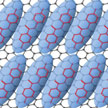 Ferroelectric liquid crystal (FLC) display technology holds the promise of fast switching times, a large viewing angle, and high resolution. FLCs have a spontaneous polarization whose direction is perpendicular to the layer. This spontaneous polarization plays an imperative role in the electro-optic switching of FLCs. Researchers have now developed a technique to amplify the spontaneous polarization by doping graphene into FLCs.
Ferroelectric liquid crystal (FLC) display technology holds the promise of fast switching times, a large viewing angle, and high resolution. FLCs have a spontaneous polarization whose direction is perpendicular to the layer. This spontaneous polarization plays an imperative role in the electro-optic switching of FLCs. Researchers have now developed a technique to amplify the spontaneous polarization by doping graphene into FLCs.
Sep 18th, 2014
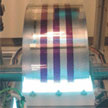 Electrochromic devices are some of the most attractive candidates for paper-like displays, so called electronic paper, which will be the next generation display. Researchers have now demonstrated solid state flexible polymer based electrochromic devices are fabricated continuously by stacking layers in one direction. This novel bottom-up approach with no need for a lamination step enables fully printed and 2D patterned organic electrochromics.
Electrochromic devices are some of the most attractive candidates for paper-like displays, so called electronic paper, which will be the next generation display. Researchers have now demonstrated solid state flexible polymer based electrochromic devices are fabricated continuously by stacking layers in one direction. This novel bottom-up approach with no need for a lamination step enables fully printed and 2D patterned organic electrochromics.
Sep 17th, 2014
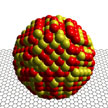 The adoption of a newly developed, facile synthesis method in catalyst designs may permit the rapid screening of nanoalloys for water contaminants. Given the compositional dynamics of this technique, a series of nanoalloys with different surface compositions can be quickly synthesized using a single starting solution and the optimal metal ratio experimentally determined to find the best catalytic reactivity for degrading the pollutant.
The adoption of a newly developed, facile synthesis method in catalyst designs may permit the rapid screening of nanoalloys for water contaminants. Given the compositional dynamics of this technique, a series of nanoalloys with different surface compositions can be quickly synthesized using a single starting solution and the optimal metal ratio experimentally determined to find the best catalytic reactivity for degrading the pollutant.
Sep 15th, 2014
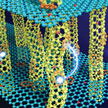 Researchers consider the rational combination of carbon nanotubes (CNTs) and graphene into three-dimensional hybrids an effective route to amplify the inherent physical properties at the macroscale. By in situ nitrogen doping and structural hybridization of carbon nanotubes and graphene, researchers have now successfully fabricated nitrogen-doped aligned carbon nanotube/graphene sandwiches. In this work, aligned CNTs and graphene layers were anchored to each other, constructing a sandwich-like hierarchical architecture with efficient 3D electron transfer pathways and ion diffusion channels.
Researchers consider the rational combination of carbon nanotubes (CNTs) and graphene into three-dimensional hybrids an effective route to amplify the inherent physical properties at the macroscale. By in situ nitrogen doping and structural hybridization of carbon nanotubes and graphene, researchers have now successfully fabricated nitrogen-doped aligned carbon nanotube/graphene sandwiches. In this work, aligned CNTs and graphene layers were anchored to each other, constructing a sandwich-like hierarchical architecture with efficient 3D electron transfer pathways and ion diffusion channels.
Sep 12th, 2014
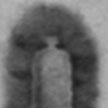 The flexibility required when fabricating flexible electronic components has led to the use of plastic substrates and different transfer techniques to fabricate flexible devices. However, one of the biggest obstacles to mass adoption of flexible electronics has been the incompatibility with industry's state-of-the-art silicon-based CMOS processes. Researchers have now developed a new process that can be used to reduce the thickness of the silicon substrate until the required flexibility is obtained. In new work, they demonstrate a flexible (0.5 mm bending radius) nanoscale FinFET on silicon-on-insulator using a back-etch based substrate thinning process.
The flexibility required when fabricating flexible electronic components has led to the use of plastic substrates and different transfer techniques to fabricate flexible devices. However, one of the biggest obstacles to mass adoption of flexible electronics has been the incompatibility with industry's state-of-the-art silicon-based CMOS processes. Researchers have now developed a new process that can be used to reduce the thickness of the silicon substrate until the required flexibility is obtained. In new work, they demonstrate a flexible (0.5 mm bending radius) nanoscale FinFET on silicon-on-insulator using a back-etch based substrate thinning process.
Sep 9th, 2014
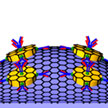 As a prime example of how the integration of multiple disparate nanotechnology fields allows the realization of novel or expanded functionalities, researchers have demonstrated a multimodal sensing device which integrates the functionalities of three traditional single mode sensors. Specifically, the team fabricated a graphene-based multimodal biosensing device, capable of transducing protein binding events into optical, electrical, and mechanical signals.
As a prime example of how the integration of multiple disparate nanotechnology fields allows the realization of novel or expanded functionalities, researchers have demonstrated a multimodal sensing device which integrates the functionalities of three traditional single mode sensors. Specifically, the team fabricated a graphene-based multimodal biosensing device, capable of transducing protein binding events into optical, electrical, and mechanical signals.
Sep 8th, 2014
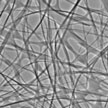 Nanotechnology has the potential to deliver the next generation lithium-ion batteries (LIBs) with improved performance, durability and safety at an acceptable cost. However, several challenging bottlenecks remain to build the ideal nanostructured electrodes for ultrafast rechargeable LIBs. To overcome these challenges, researchers developed a mechanical force-driven method to prepare elongated bending titania-based nanotubes for high-rate LIBs.
Nanotechnology has the potential to deliver the next generation lithium-ion batteries (LIBs) with improved performance, durability and safety at an acceptable cost. However, several challenging bottlenecks remain to build the ideal nanostructured electrodes for ultrafast rechargeable LIBs. To overcome these challenges, researchers developed a mechanical force-driven method to prepare elongated bending titania-based nanotubes for high-rate LIBs.
Sep 4th, 2014
 Researchers have explored the use of curcumin nanoparticles for the treatment of infected burn wounds, an application that resulted in reduced bacterial load and enhancing wound healing. Adding to the excitement regarding curcumin in multiple fields of medicine, most prominently in oncology, these new findings demonstrat that curcumin nanoparticles were more effective at both accelerating thermal burn wound closure and clearing infection with Methicillin Resistant S. aureus (MRSA) as compared to curcumin in its bulk size.
Researchers have explored the use of curcumin nanoparticles for the treatment of infected burn wounds, an application that resulted in reduced bacterial load and enhancing wound healing. Adding to the excitement regarding curcumin in multiple fields of medicine, most prominently in oncology, these new findings demonstrat that curcumin nanoparticles were more effective at both accelerating thermal burn wound closure and clearing infection with Methicillin Resistant S. aureus (MRSA) as compared to curcumin in its bulk size.

 Subscribe to our Nanotechnology Spotlight feed
Subscribe to our Nanotechnology Spotlight feed





